Вы здесь
Mazars in Kazakhstan.
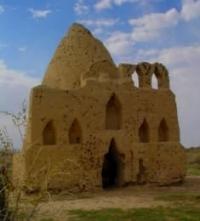
Tours on ancient monuments of Kazakhstan.
«Autumn, clouds... life is beautiful»
Sights in Kazakhstan.
Perhaps the most important architectural monuments of medieval Kazakhstan are mazars - mausoleums, or «dwellings of the dead». They are the final resting places of mighty rulers and great poets and scholars of the past. The most famous mazars still extant are the mausoleums of Babadzhi-khatun (Xth - XIth centuries), Aisha-bibi (XI - XIIth centuries), Zhoshy Khan аnd Alash Khan near Zhezkazgan town (XIIIth century), Zhuban-ana, Kaip-ata and Maulim-berdy in the valleys of Sarysu and Kengir rivers, and Karakhan in Taraz.
In order to build these monuments, ancient architects used such materials as alabaster, terracota, limestone, and shell rock. Two mazars stand on а hill 18 kilometers from the city of Taraz. One of hеm - the Mausoleum of Babadzhi-khatun - is notable for its simple but monumental architectural design.
Its cubed-shaped building is crowned with а 16-side conical dome. The fasade and the walls include niches made brickwork and the parapet of the main facade has preserved on it the remnants of an Arab inscription, «This tomb is called Abadzhi-khatun. Its constructor...»
The name of the ancient architect has been lost in the depth of centuries. Next door is the Mausoleum of Aisha-bibi, а visit to which is included in almost аnd tours through Kаzаkhstan. The mazar has а square base once covered by а dome. Massive pillars with carvings stand at all four corners of the building.
The mausolеum small niches, pillars, and arches furnished with terracotta tiles with geometrical, zoo-morphic, and solar ornaments which originated in the IInd Ist millenniums В.С. А legend tells the history of this mausoleum: it was built to bury а beautiful daughter of а famous poet and scholar, Khakim-ata.
She got ill and suddenly died during bad autumn weather during а trip to her fiance, Kara Khan - famous due Kazakh legends and fairy-tales. Scholars have proved this theory through the words that have been preserved on the corner pillars of the mazar - «Autumn, clouds... life is beautiful.»
The Mausoleum of Zhoshy Khan (built in 1228 - 1230) stands on а steep bank of the Kara-Kengir river. This one-chamber portal building of dark red baked bricks with а spherical-conical dome is typical of the epoch of the Karalhanid dynasty. The Mazar of Коку Korpesh and Bayan Slu is а unique architectural monument dating from Kazakh nomads of the Xth - XIth centuries.
It is located on the bank of Ауaguz river n the Semipalatinsk province and is called after characters of an early-medieval epic. The building is 11.65 meters high. In front of its entrance there are four sculptures depicting the epic characters- Kozy Korpesh, Bayan Sulu, her younger sister, and daughter-in-law.
This monument symbolizes the immortal tragic love of the young couple. Many ancient tombs have been discovered in western Kazakhstan Mangistau, Usturt, and the valley of Emba river - the area is rich in beautiful shell rock of pink, grey, and yellowish colors.
Most local tombs have ritual потайс symbols - sagana-tamy, kulyptasy, kaitasy, kerege-tamy, and others. Sagana-tamy represents а rectangular paralleliped made of large shell rocks, which were very popular at the turn of the XIXth and XXth centuries.
More ancient memorial Turkic monuments are kulyptasy - а high stone relief-decorated pillar with а massive base dug into the ground. Several underground buildings have also been preserved in this region. The most ancient is Shakpakata Mosque dating back to the IX Xth centuries. It is the size of an ordinary yurt used by modern Kazakhs.
The walls are furnished with multicolored shell rock and the pillars supporting the ceiling are decorated with bizarre carved patterns. This stone mosque gave refuge to an outstanding Central Asian Sufi, Shakpak-ata, and his disciples during foreign invasions.
Shakpak-ata spent his last years alone in the mosque and his disciplesbrought him food. The Mangistau province of Kazakhstan is famous for а unique fortress, Sherkalu, which was cut out of the rock. Known since the VIIIth - IXth centuries (the epoch of the Arab invasion), the fortress was absolutely unassailable and successfully resisted лапу sieges.
The contours of the rock in which the fortress was cut resembled а lion ready to jump, the foгtress was referred to as “lion town”
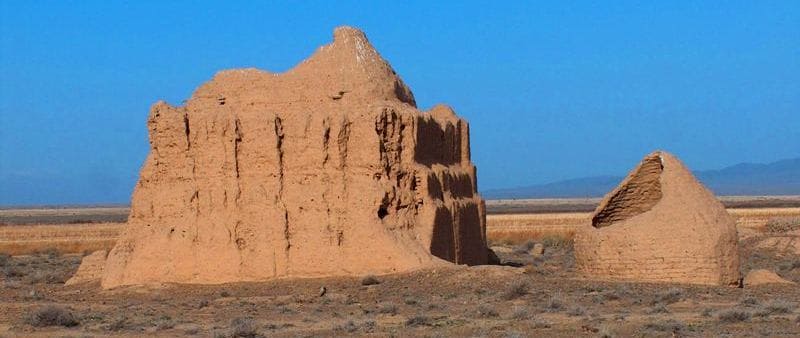
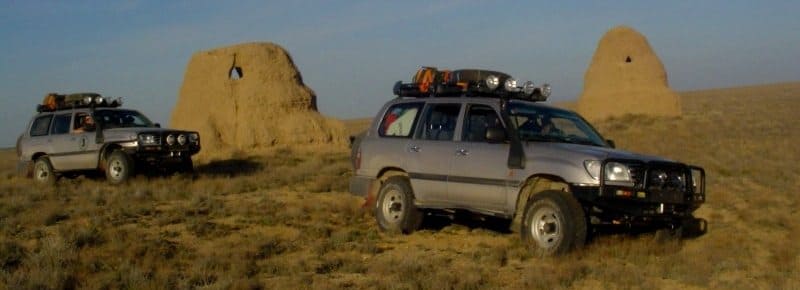

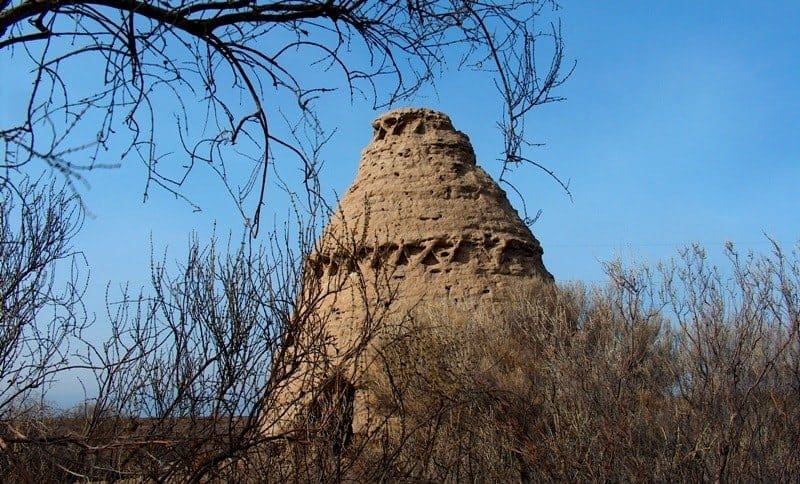
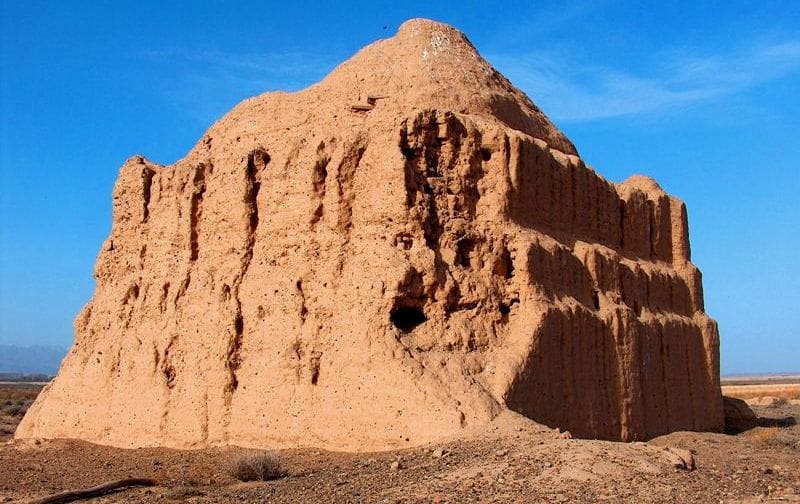
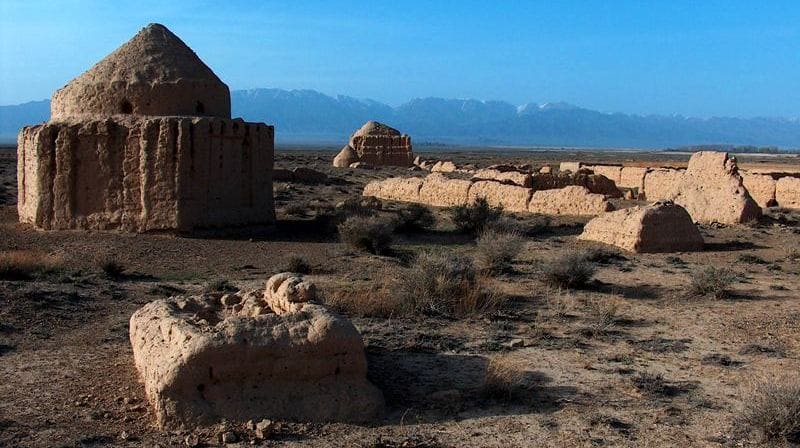
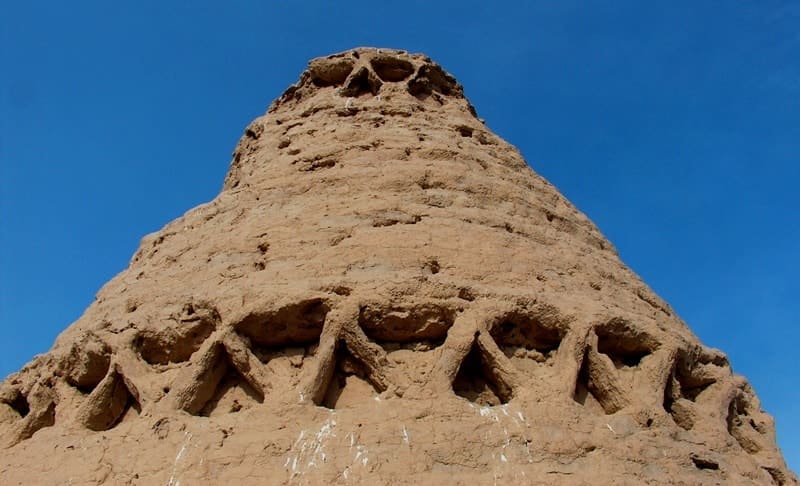

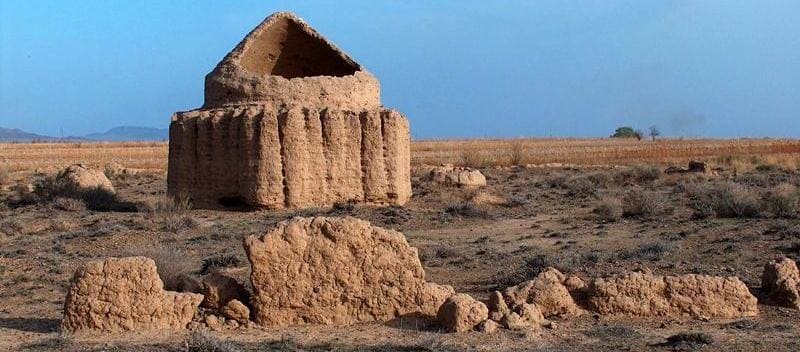

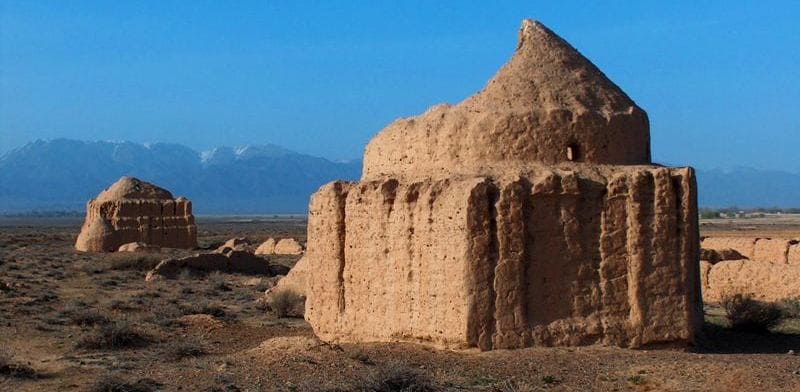
Authority:
«Monuments of the Central Asia». The author of M. Khahsimov. Publishing house, Saga, 2001. Samarkand. «Masterpieces of the Central Asia», Tashkent, Publishing house Sanat, 2004. www.farsah.kz.
Photo by:
Alexander Petrov.







